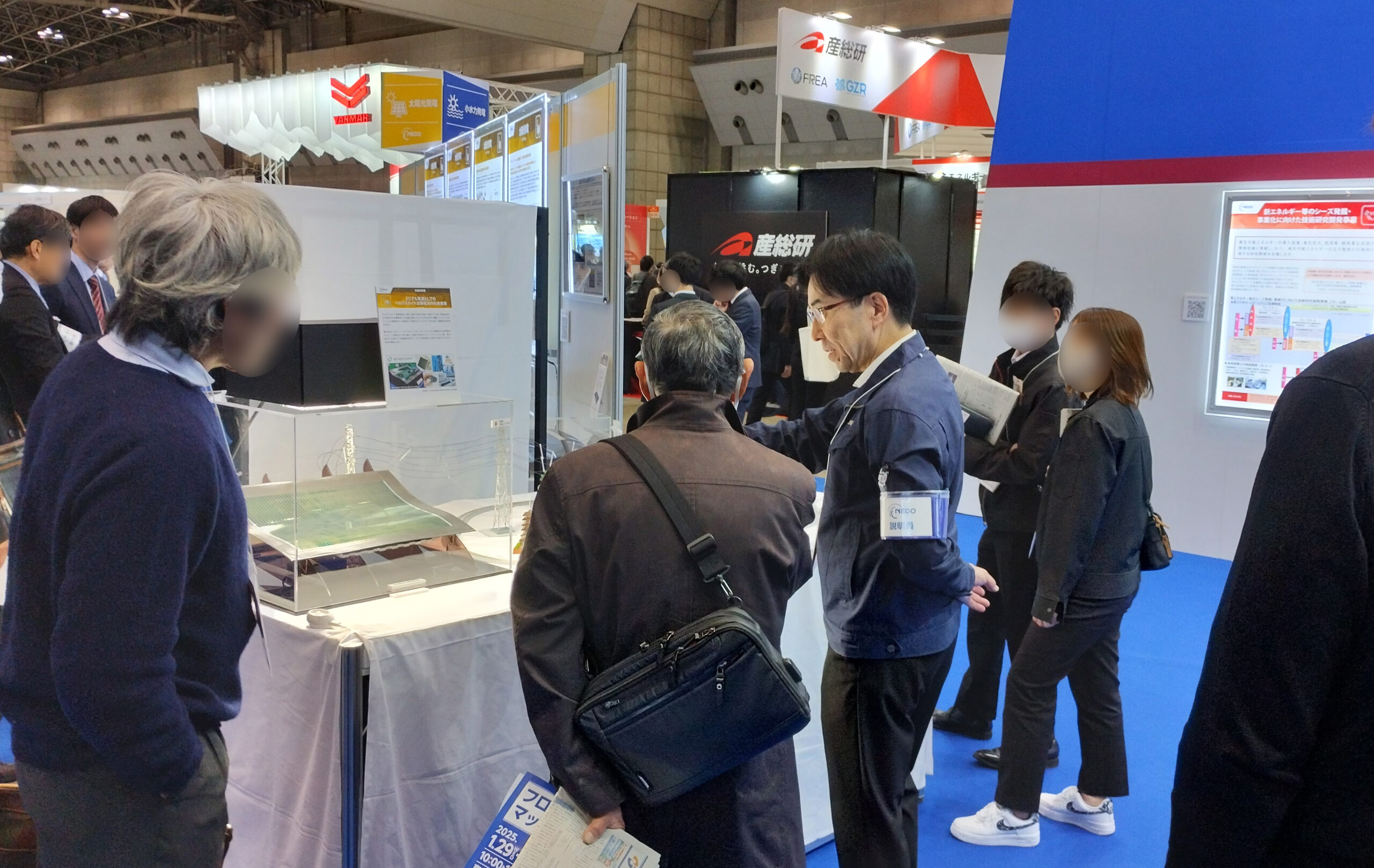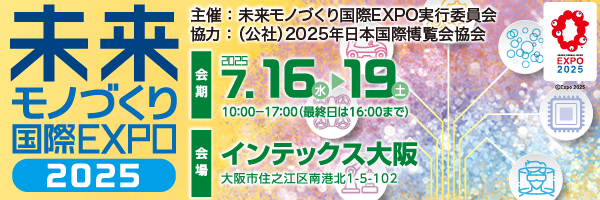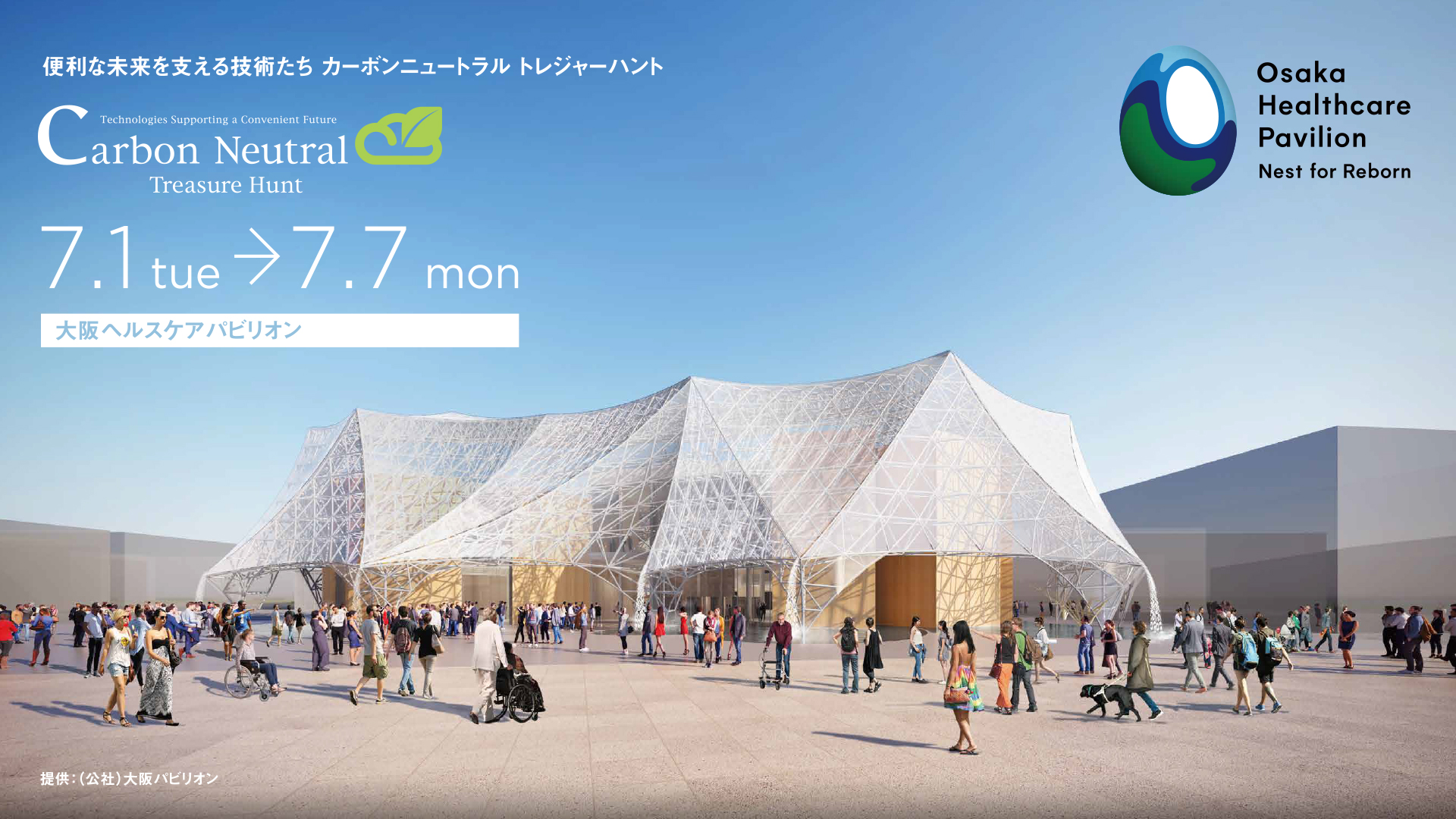
会社概要About us
大阪・関西万博展示、大盛況です!
大阪・関西万博展示3日目、沢山の方々にご覧いただき、大盛況です!
7月7日(月)までの展示となりますので、ぜひご覧ください。
【開催概要】
開催期間:2025年7月1日(火)~ 7月7日(月)
会 場 :大阪・関西万博 (大阪ヘルスケアパビリオン リボーンチャレンジ内)
出展内容:当社開発の「ペロブスカイト太陽電池モジュール」の展示
URL :https://osaka-startup.com/program/rc/CN/
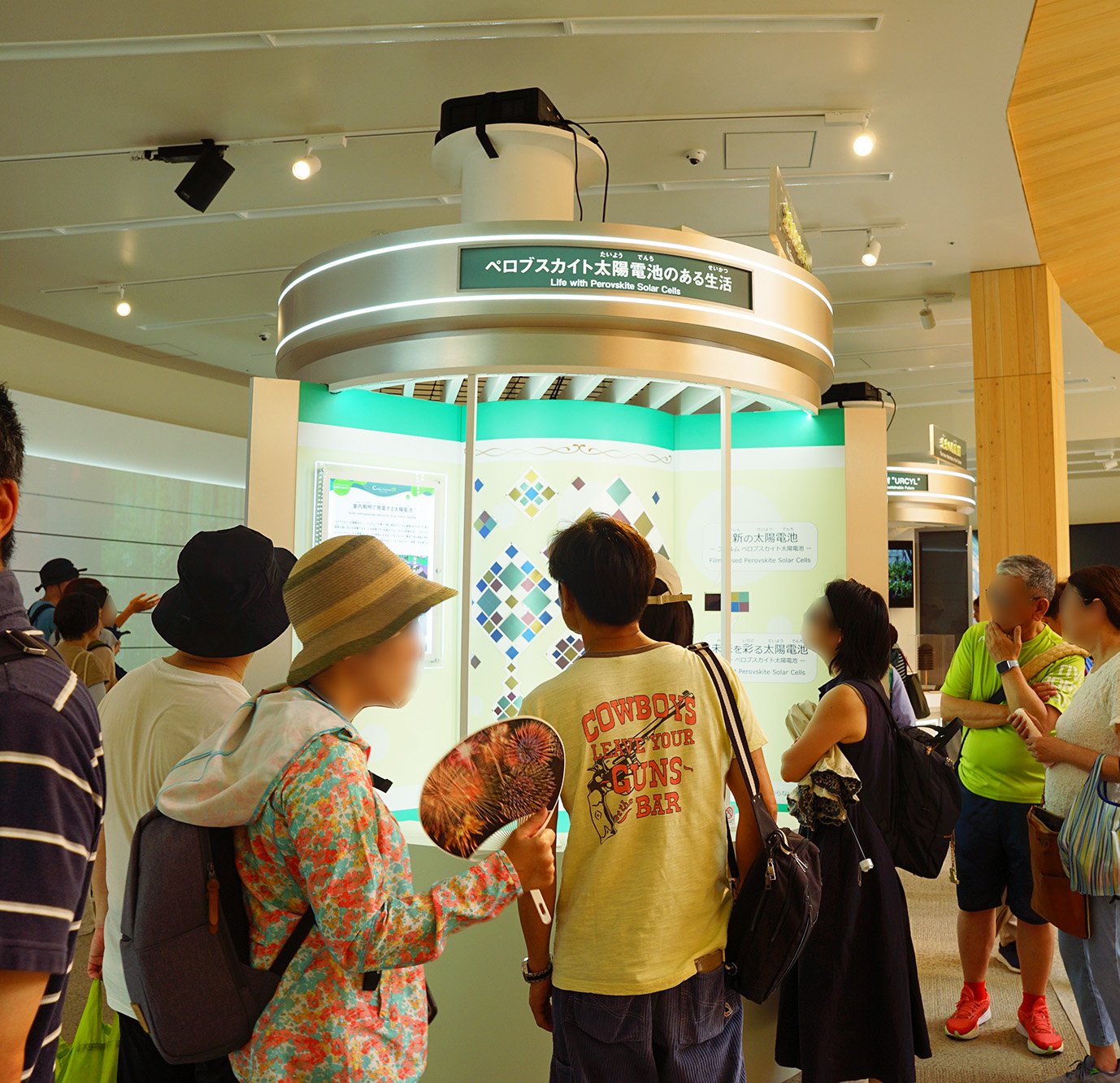
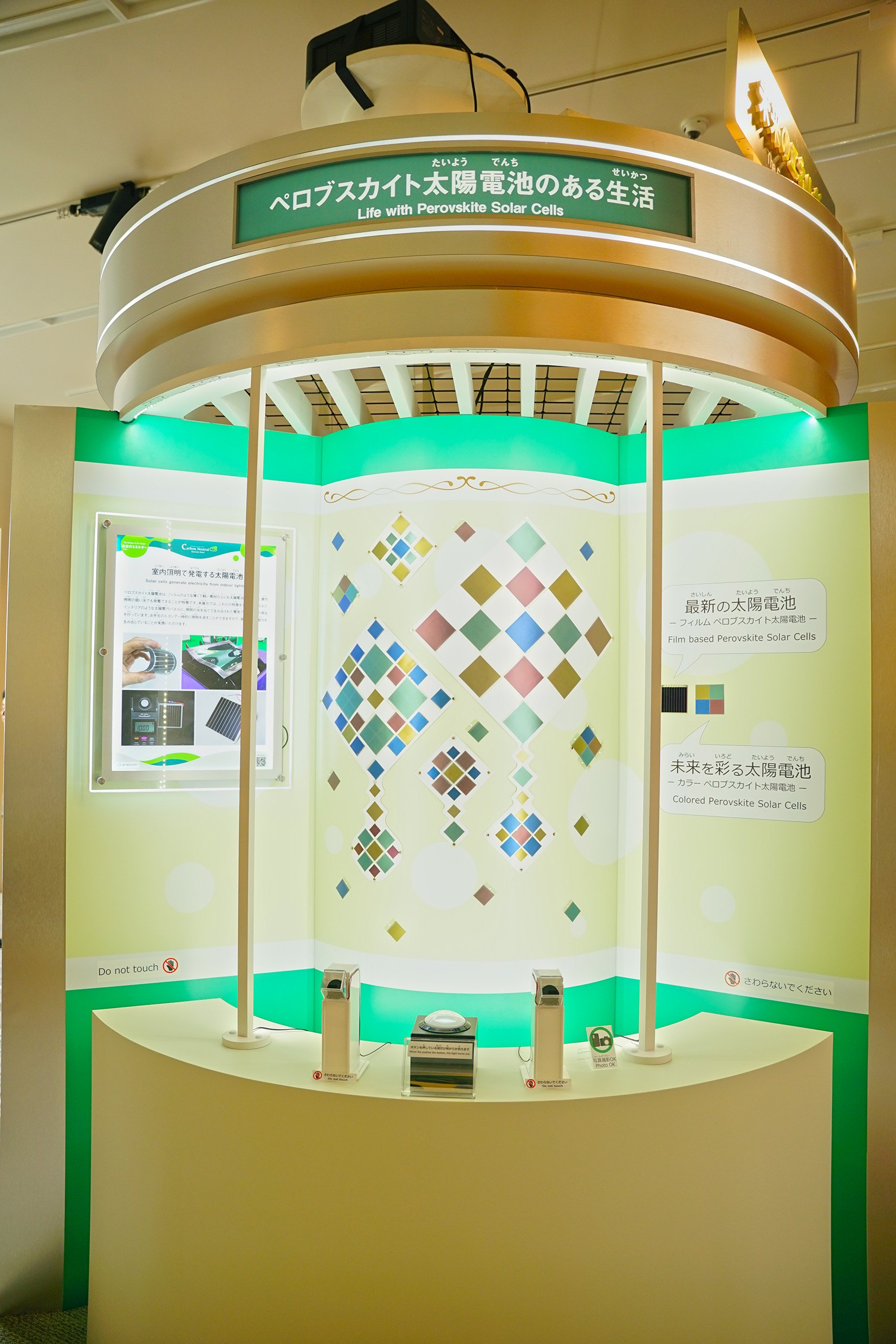
大阪・関西万博にて「未来を彩るペロブスカイト太陽電池」を展示中!
本日7月1日(火)より、2025年日本国際博覧会(大阪・関西万博)の大阪ヘルスケアパビリオン「リボーンチャレンジ」のエリアにて、「カーボンニュートラル トレジャーハント ~便利な未来を支える技術たち~」が開始されました。
エネコートテクノロジーズのブースでは「どこでも電源®」の一つの形として、暮らしを華やかに彩る未来のペロブスカイト太陽電池を展示しております。室内で発電でき、デザイン性も兼ね備えた、一見すると太陽電池には見えない「未来を彩る太陽電池」を、ぜひこの機会に間近でご覧ください。
大阪ヘルスケアパビリオン「リボーンチャレンジ」エリアは予約不要にて見学できますので、
大阪・関西万博へお越しの際は、是非弊社の展示ブースへお立ち寄りいただき、「未来の太陽電池」を感じてみてください!
皆様のご来場を心よりお待ちしております!
なお、展示の様子につきましては、弊社Instagramにも写真を随時掲載予定です。
そちらも併せてご覧いただけますと幸いです。
[Instagram URL]https://www.instagram.com/enecoat.official/
【開催概要】
開催期間:2025年7月1日(火)~ 7月7日(月)
会 場 :大阪・関西万博 (大阪ヘルスケアパビリオン リボーンチャレンジ内)
出展内容:当社開発の「ペロブスカイト太陽電池モジュール」の展示
URL :https://osaka-startup.com/program/rc/CN/
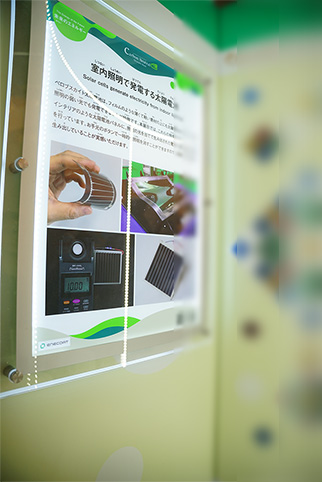
【関連展示会について】
本展示につきましては先のお知らせの通り、7/16(水)~7/19(土)の間、万博の関連展示会であります「未来モノづくりEXPO 2025」(宇治市・商工会議所ブースでの共同出展)におきましても特別に展示いたします。本展示会では弊社説明員が常駐し、「製品の説明を詳しく聞きたい!」「より近くで見てみたい!」などのご要望にお応えします。
是非こちらの展示会にも万博と併せて足をお運びいただけますと幸いです。
URL:https://fmiexpo.nikkan.co.jp/event/exhibitor?item=5256
【謝辞】
本展示物の作製に際しまして、「メルクパフォーマンスマテリアルズ合同会社」様より多大なご協力をいただきました。(https://www.merckgroup.com/jp-ja/company/performance-materials.html)
また、本展示における音声ガイダンスには動画制作会社「VIDWEB」様のボイスゲートを使用しております。(https://vidweb.co.jp/)
ここに謹んで御礼を申し上げます。
「未来モノづくり国際EXPO 2025」に出展します!
この度、弊社は7月16日(水)から19日(土)まで開催される「未来モノづくり国際EXPO 2025」に出展することになりましたので、お知らせいたします。
宇治市・宇治市商工会議所ブースにおきまして、宇治市に拠点を置く4社で合同出展をいたします。
本展示会では、エネコートテクノロジーズが開発した「未来を彩るペロブスカイト」の動作展示を行います。
「未来モノづくり国際EXPO 2025」は、万博関連展示会でもあることから、
大阪・関西万博 本会場(大阪ヘルスケアパビリオン リボーンチャレンジ)において、
7月1日(月) ~ 7月7日(日) の期間限定で展示される「未来の太陽電池」を、特別に本展示会でも展示します。最新のデバイスであり、これからの未来を彩る画期的な太陽電池を、間近にご覧いただける絶好の機会です。
特に本展示会では、弊社の説明員が常駐して、ご来場いただいた皆様へ直接ご説明できる体制を整えます。大阪・関西万博 本会場にて展示をご覧いただいた方も、「製品の説明を詳しく聞きたい!」「より近くで見てみたい!」などのご要望にお応えできますので、本展示会に足をお運びいただき、説明員にお声がけいたければ幸いです。
是非この機会に弊社ブースへお立ち寄りいただき、太陽電池の未来を感じてみてください!
なお、本展示会におきましては、ペロブスカイト太陽電池に関しまして弊社CTO 堀内 保によります講演会、および桐蔭横浜大学 宮坂 力 特任教授とのディスカッションも予定されております。
こちらもここでしか聞けない貴重な議論となりますので、本講演・フォーラムにも是非参加をご検討ください。
「未来モノづくり国際EXPO 2025」詳細はこちら
【開催概要】
展示会名 :未来モノづくり国際EXPO 2025
開催期間 :2025年7月16日(水)~7月19日(土)
会 場 :インテックス大阪
ブース番号: A-28 (宇治市・宇治商工会議所 共同出展ブース)
出展内容 :当社開発の「ペロブスカイト太陽電池モジュール」の展示
URL :https://fmiexpo.nikkan.co.jp/event/exhibitor?item=5256
【講演会・フォーラム】(聴講申込が必要です)
タイトル :【ペロブスカイト太陽電池ディスカッション】実用化加速へ!産学が語るペロブスカイト太陽電池の課題と展望
開催時刻 :2025年07月16日(水) 15:00~16:30
会 場 :未来モノづくり国際EXPOステージ(6号館Aゾーン)
講演者 :桐蔭横浜大学 宮坂 力 特任教授
株式会社エネコートテクノロジーズ CTO 堀内 保
モデレーター:日刊工業新聞社 編集局 副部長 葭本 隆太 氏
大阪・関西万博に出展します! (7月1日~7月7日)
この度、2025年日本国際博覧会(大阪・関西万博)における大阪ヘルスケアパビリオン「リボーンチャレンジ」に出展することになりましたので、お知らせいたします。
エネコートテクノロジーズの出展期間は2025年7月1日(火)から7月7日(月)の一週間です。
この期間は「リボーンチャレンジ」のテーマが「カーボンニュートラル トレジャーハント ~便利な未来を支える技術たち~」となっており、環境に貢献する次世代の技術として、エネコートテクノロジーズが開発したペロブスカイト太陽電池「どこでも電源®」を展示いたします。
大阪・関西万博にお越しの際は、大阪ヘルスケアパビリオンへぜひお立ち寄りいただき、今までにない新しい未来の太陽電池をご覧ください。
皆様のご来場を心よりお待ちしております。
「カーボンニュートラル トレジャーハント ~便利な未来を支える技術たち~」の詳細はこちら
日本経済新聞(2025年4月7日付)で弊社が紹介されました
日本経済新聞で弊社が紹介されました。
詳細はこちら(NIKKEI Film)
ペロブスカイト太陽電池、大阪万博にも 照らせ2兆円市場(NIKKEI Film)
三菱マテリアル株式会社と電子輸送層の塗布タイプ成膜用インクを開発
このたび三菱マテリアル株式会社との共同研究でペロブスカイト太
この成果は、国立研究開発法人新エネルギー・
三菱マテリアル株式会社のプレスリリースはこちら
KDDI株式会社様の弊社のペロブスカイト太陽電池を活用した基地局実証が「地球環境大賞 総務大臣賞」を受賞しました。
KDDI株式会社様が「ペロブスカイト太陽電池を基地局で活用した実証実験」について、「第33回地球環境大賞 総務大臣賞」を受賞されました。
こちらの実証実験には、弊社のペロブスカイト太陽電池が使用されています。
KDDI株式会社様のプレスリリースはこちら
国内初!駅ホーム屋根へのフィルム型ペロブスカイト太陽電池実証実験を開始しました
九州旅客鉄道株式会社と日揮株式会社と三社共同で、国内初となる、駅ホーム上におけるフィルム型ペロブスカイト太陽電池設置の実証実験を開始しました。
プレスリリースはこちら
シリーズCラウンドの追加資金調達②を実施しました
株式会社エネコートテクノロジーズは、第三者割当増資によりシリーズC ラウンドの最終の資金調達を実施しましたのでお知らせいたします。
第19回再生可能エネルギー世界展示会&フォーラム(RE2025)が始まりました
東京ビッグサイトでの「エネルギーイノベーション総合展」の「第19回再生可能エネルギー世界展示会&フォーラム(RE2025)」が始まりました。
本日から3日間の開催となります。
ご来場の際には、弊社ブースへもぜひお立ち寄りください。
